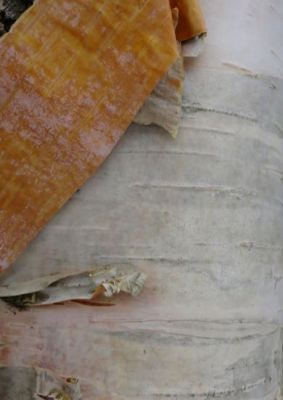Bear-ing a Gift

Our house is pretty quiet. But the other day I detected a stirring in the basement. Was a mouse twitching its nose around our stash of squash, potatoes and apples?
I eased down the stairs hoping to catch a glimpse of the noisemaker. This wasn’t the first time I’ve done the basement sneak.
A few years ago, mutual surprise erupted when I discovered a cottontail rabbit sitting in front of the washing machine. We stared at each other for a second. Then the rabbit scurried and skittered across the basement floor and disappeared into the labyrinth of piled firewood.
A quick investigation betrayed the rabbit’s entry into the house. The outside screen over the dryer vent had fallen off and the rabbit had taken an unfortunate slide into the basement. It took three days and fresh kale leaves inside a big live trap to catch the fugitive lagomorph. After scolding the rabbit to not return, I freed it outdoors.
I heard a noise again from beneath the basement stairs. Was a mouse exploring the integrity of the rubber of my chest waders? Or was it interested in the packed boxes of toys stowed away before my two daughters left home and went off to find mates and new homes.
No, this noise sounded more like a slow awakening. There was no quickness or alertness authoring this disturbance. It was born of lethargy similar to that of black bears that emerge from winter’s hibernation.
We are a long ways from spring and yet when I opened a plastic storage box, a small bear lay with its unblinking eyes staring as they always have. The rounded left ear was partially torn away but nothing that a few minutes and a needle and thread couldn’t patch. The large plastic eyes were not as clear as they once were and the shiny ribbon that graced its neck is long gone.The label was tattered and faded. But hey, what do you expect? The bear and I were introduced to each other sixty-five years ago.
From a nearby box I extracted the baby book my mother had made for me. Here was a piece of my own history with pages of black and white photos, captions inked in my mother’s cursive. Soon I was turning page after page, remembering some of the moments captured. It didn’t take long to find the image of my first Christmas Eve. I I was sitting in front of a Christmas tree, flanked by a chubby new Teddy bear, a gift from Great Grandma Carlson.

Two months ago I attended the annual Theodore Roosevelt Symposium in Dickinson, North Dakota. I heard about the origin of the Teddy bear in a presentation by Darrin Lunde, biologist and author of The Naturalist: Theodore Roosevelt, a Lifetime of Exploration, and the Triumph of American Natural History.
After three days of bear hunting in Mississippi in 1902, Roosevelt had not seen a bear. The guides tracked down a bear that the hounds had trailed and attacked. The guides managed to capture the wounded bear and they tied it to a tree, beckoning Roosevelt to come and shoot it.
Roosevelt refused. He deemed it unsportsmanlike to shoot a tied animal.
Soon political cartoonists portrayed the president refusing to shoot the bear. New York candy shop owner Morris Michtom saw one of the cartoons and got an idea. He requested permission from the White House to christen two stuffed toy bears that his wife had sewed with the title “Teddy’s bears.” He placed them in his shop window and sold them quickly. Other shoppers began requesting such a bear. Soon Michtom was mass-producing them and Teddy bears were launched across America and Europe.

I put the baby book away and eased the Teddy bear out of its hibernacula. With the mystery of the ramblings settled, I carried the bear upstairs into the new light.
The sun glistened off the fresh snow in a manner unlike any I’ve witnessed. Perhaps all seems brighter with the birth of my first grandchild the day before. I think it fitting that I mend a bear’s ear and clean it up before shipping him overseas to know another special Christmas Eve with little Eleanor Kay.


























